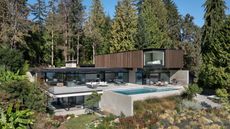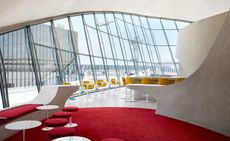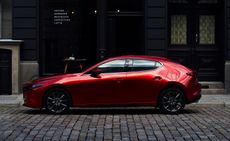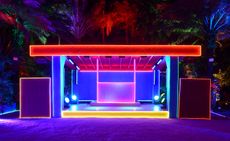Fuell Fllow e-motorbike could be the ultimate commuting machine
The Fuell Fllow, a blend of superbike power and style with the silence and convenience of all-electric power, is a bold statement for those seeking zero-emission urban travel
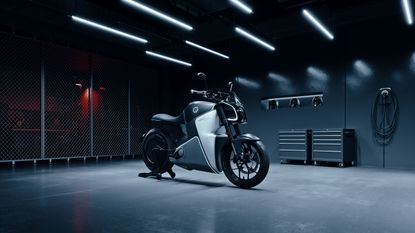
Receive our daily digest of inspiration, escapism and design stories from around the world direct to your inbox
Thank you for signing up to Wallpaper. You will receive a verification email shortly.
There was a problem. Please refresh the page and try again.
The new Fuell Fllow takes the iconography of a superbike and applies it to an all-electric e-commuter. Designed by engineer Erik Buell, founder of America’s Buell Motorcycle Company (now a sub-vision of Harley Davidson), the Fllow condenses many decades of experience working at the cutting edge of road and race bikes. We previewed the Fuell Fllow last year, but it's now production-ready and orders are being taken.
Fuell Flow e-motorbike, now available to order

The Fllow’s raison d'être is commuting, targeting those who consider e-bikes and conventional e-motorbikes and scooters to lack a certain sense of muscularity and presence. Buell and his engineering team spent a lot of time researching possible scenarios for urban transportation. ‘When I look to the future, there is one compelling solution for urban/suburban transportation,’ he says. ‘Whether it’s a human-pedalled bicycle, a pedal-assisted electric bicycle, or an electric motor, two wheels are the clear solutions for urban mobility.’

The new bike blends superbike looks with the practicality and storage capacity of a scooter, a high-voltage fast charging system, and a number of connectivity and safety features. For many non-riding city dwellers, the Fllow’s promised silent running already gives it a huge advantage over regular motorbikes. ‘Replacing the 60 million new gasoline-powered two-wheelers sold annually with electricity creates a huge impact on quality of life,’ Buell notes.

Nevertheless, this is still a machine for the enthusiast – unsurprisingly given Buell’s previous focus. The engineer is an undeniable convert to the benefits of electrification, with a few caveats. ‘Quite frankly, innovation is critical – you cannot build a new future hanging onto the old ways,’ he says. ‘New urban electric vehicles must not only feel approachable but also integrate with the digital environment and technology that is part of our society. ‘

Key innovations include the ability to upgrade the battery pack as technology improves, a magnesium monocoque chassis and CCS charging up to 50kW. The charge socket and in-wheel motor are also modular, allowing for upgrades, while the digital dashboard will get over-the-air upgrades as they become available. A full safety suite, including blind spot detection and collision warnings, is also available.

The Fllow’s targets – 150 miles (240km) of urban range, weighing around 180kg, with space for a passenger and ultra-rapid charging – make it an excellent commuting machine, especially as it is more than capable of maintaining highway speeds (essential in the US commuting environment). Superbike acceleration helps as well, with a 3.5 second 0-100km/h sprint giving that added sense of security on the multi-laned highways that thread their way through the American urban landscape.

Fuell Fllow, available for pre-order at a $9,995, Fuell.us
Wallpaper* Newsletter
Receive our daily digest of inspiration, escapism and design stories from around the world direct to your inbox
Jonathan Bell has written for Wallpaper* magazine since 1999, covering everything from architecture and transport design to books, tech and graphic design. He is now the magazine’s Transport and Technology Editor. Jonathan has written and edited 15 books, including Concept Car Design, 21st Century House, and The New Modern House. He is also the host of Wallpaper’s first podcast.
-
 Marine house on the west coast of Canada offers a serene collection of living spaces
Marine house on the west coast of Canada offers a serene collection of living spacesOpenspace Architecture’s Marine House is a meticulously crafted and unashamedly modern design that makes the most of its waterside site in West Vancouver
By Jonathan Bell Published
-
 ‘He challenged the way we see things’: JW Anderson’s collaboration with Michael Clark has arrived
‘He challenged the way we see things’: JW Anderson’s collaboration with Michael Clark has arrivedThe JW Anderson x Michael Clark collection sees designer Jonathan Anderson pay homage to the radical British dancer and choreographer who rose to prominence in the 1980s
By Jack Moss Published
-
 Tad.atelier’s Urban Houses project in Ho Chi Minh City explores shared and private space
Tad.atelier’s Urban Houses project in Ho Chi Minh City explores shared and private spaceJoining the Wallpaper* Architects’ Directory 2023 is Tad.atelier from Vietnam, the exciting emerging architecture studio behind this Ho Chi Minh City project
By Ellie Stathaki Published
-
 Kelly Wearstler creates a virtual desert design for the new Hummer EV
Kelly Wearstler creates a virtual desert design for the new Hummer EVAmerican interior designer Kelly Wearstler's desert brutalism is the perfect virtual partner for the GMC Hummer EV
By Jonathan Bell Last updated
-
 Sir David Adjaye and Aston Martin design NYC apartments
Sir David Adjaye and Aston Martin design NYC apartmentsExpect dark, brooding tones, and smoked glass, along with a scattering of design classics
By Jonathan Bell Published
-
 The story behind the eccentric Times Square yacht drop
The story behind the eccentric Times Square yacht dropAzimut recently manouvered a gleaming, 60 ft yacht into ‘The Crossroads of the World’ Times Square. But, as Azimut Benetti Group vice president Giovanna Vitelli explains, navigating the sea often proves easier than navigating NYC...
By Elly Parsons Last updated
-
 The latest wave of airports landing impact
The latest wave of airports landing impactBy Jonathan Bell Last updated
-
 New Lexus hub offers food, tech and culture in New York’s Meatpacking District
New Lexus hub offers food, tech and culture in New York’s Meatpacking DistrictBy Elly Parsons Last updated
-
 LA Auto Show 2018: cars, concepts, and Tesla-contesters
LA Auto Show 2018: cars, concepts, and Tesla-contestersBy Jonathan Bell Published
-
 Miami moves: artist Carsten Höller on his pop-up club for Prada
Miami moves: artist Carsten Höller on his pop-up club for PradaBy Ali Morris Last updated
-
 Hot wheels: art dealer Kenny Schachter pops the bonnet on his car collection
Hot wheels: art dealer Kenny Schachter pops the bonnet on his car collectionBy Jonathan Bell Last updated
